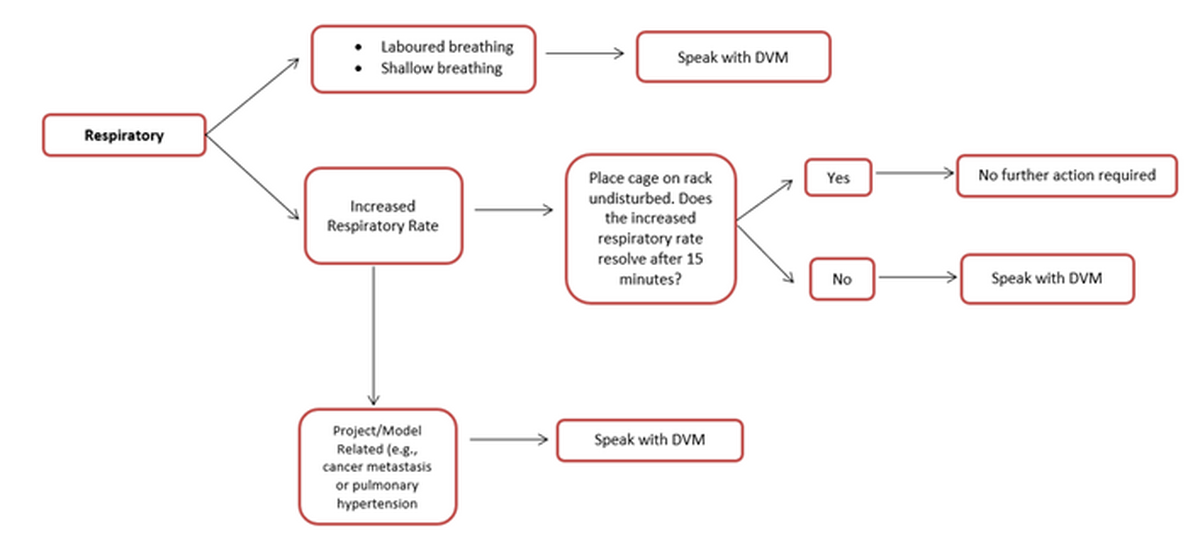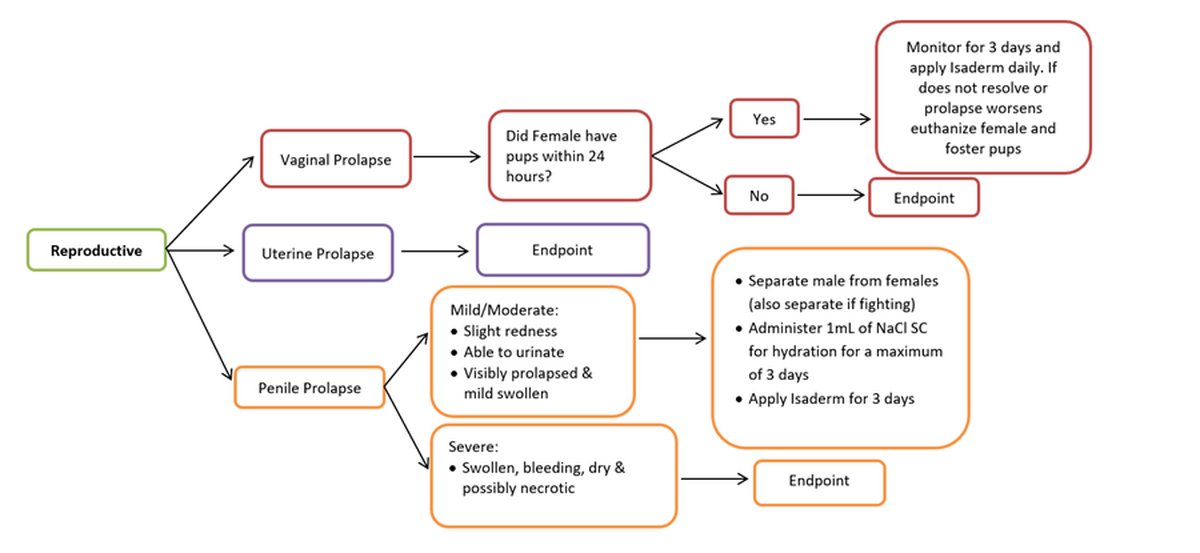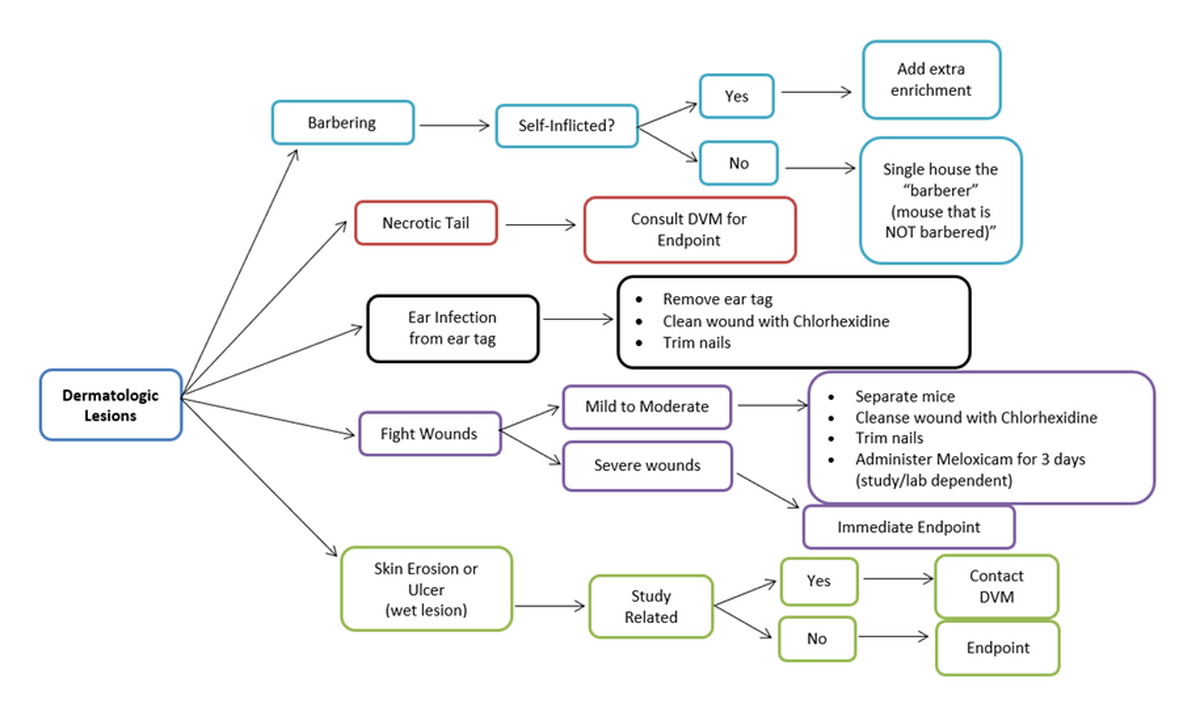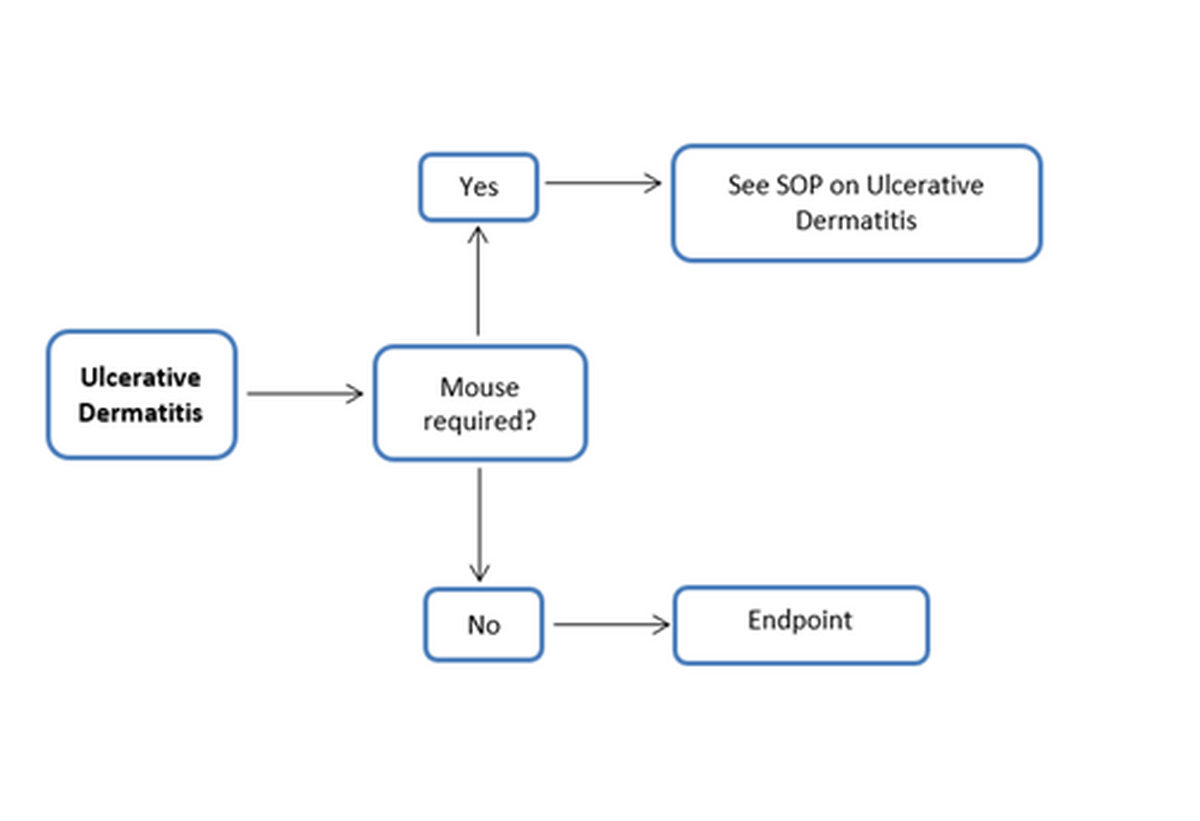University Animal Care Committee Standard Operating Procedure
Document No: 7.34
Subject: Treatment Protocol for Sick Mice
Date Issued: November 27, 2024
Revision: 0
Location: Queen’s University
Responsibility: Principal Investigators (PI), Research Staff, Veterinary Staff
Purpose: The purpose of this Standard Operating Procedure (SOP) is to describe the basic treatment protocols for sick mice. The standardization of treatment protocols will assist Veterinary staff in providing consistent care of sick mice and will assist researchers in understanding how and when their mice are being treated.
Abbreviations:
Animal Care Services ACS, Principal Investigator PI, subcutaneous SC, intravenous IV, intraperitoneal IP, intramuscular IM, per os PO, per rectum PR
1. Introduction and Definitions:
2. Procedures:
1.0 General
1.1. All treatment protocols are to be developed in consultation with the veterinarian.
1.2. Animal care attendants will follow the workflow processes described in SOP 14.3 Clinical Health Reports in Rodents
1.3. Treatments are initiated by Animal Care Staff. Research personnel will be notified of the treatment plan.
2.0 Physical Exam
2.1. All sick mice should receive a physical exam, including an evaluation of eating, drinking, urination and defecation.
2.2. Before removing the cage from the rack observe the mouse gait and activity level. Observe the respiration at cage level before handling.
2.3. Check cage card for procedural information. If pain is suspected, the Mouse Grimace Scale (Appendix 2) can be used as an aid to determine the presence of pain.
2.4. Check mucous membranes colour, teeth (are they wearing well? is there a malocclusion?) and look for and evaluate any lesions.
2.5. Check the hydration status by using the skin turgor.
2.6. Be sure to note the body condition (see SOP’s 7.2 Humane Interventions in Mice or 10.2 Humane Interventions in Rats for scoring chart).
2.7. Palpate the abdomen and mammary area and check bladder function.
2.8. Check the skin for lesions/abscesses/tumours.
2.9. Observe perineal area for wetness or staining.
2.10. Check the eyes for any abnormalities.
3.0 Record Keeping
3.1. All exam findings, treatments and observations must be documented on the rodent health report as per SOP 14.3 Clinical Health Reports in Rodents.
4.0 Treatment Protocols
4.1. Upon completion of the physical exam, refer to the standardized treatment algorithms (Appendix 1) for specific instruction pertaining to health concerns in the following categories:
1. Ophthalmic
2. Gastrointestinal
3. Respiratory
4. Abscesses
5. Musculoskeletal
6. Neurological
7. Reproductive
8. Dystocia
9. Dermatologic Lesions
10. Ulcerative Dermatitis
Appendix 1:
Ophthalmic:

Gastrointestinal:

Respiratory:

Abscesses:

Musculoskeletal:

Neurological:

Reproductive:

Dystocia:

Dystocia is diagnosed when one or more of the following are noted:
- Extended labour (lasting more than 2 hours)
- Active labour that does not result in another pup within 1 hour
- Abnormal vaginal discharge; excessive blood; blood when pups are not actively being passed
- Pup actively lodged in the vaginal opening
- Obvious pain: see the Mouse Grimace Scale (Appendix 2)
- Immobility of female
- Dehydration of female
- Distension of abdomen with little muscle tone
Dermatologic Lesions:

Ulcerative Dermatitis:

Appendix 2:
The Grimace Scale – Image courtesy of National Centre of 3 R’s:

Image courtesy of National Centre of 3 R’s
The Centre for Phenogenomics Standard Operating Procedure AH003
| Date | New Version |
|---|---|
| 11/27/2024 | Created |
 About Vice-Principal Research
About Vice-Principal Research